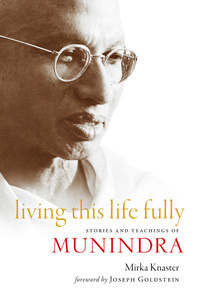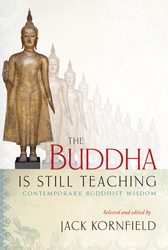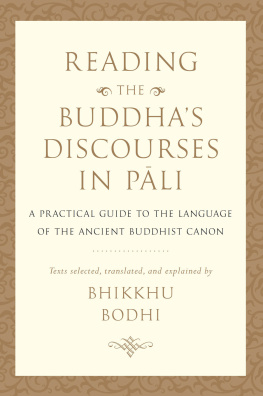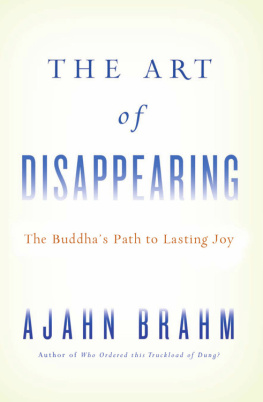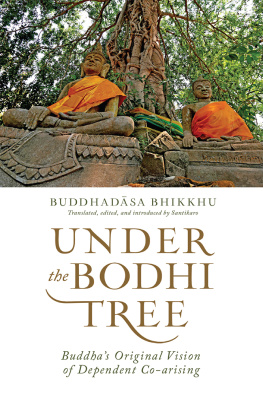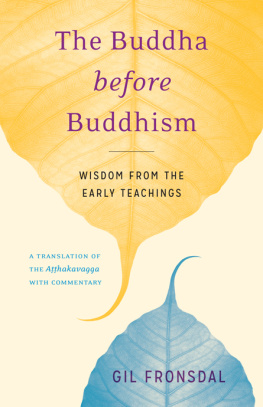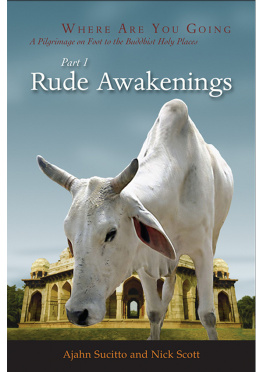
Shambhala Publications, Inc.
Horticultural Hall
300 Massachusetts Avenue
Boston, Massachusetts 02115
www.shambhala.com
1995, 2010 by Bhikkhu Sucitto
Cover art: Head of the Buddha (54.2766), anonymous. Thai, second half of fourteenth century. Leaded bronze, traces of guilding, 17 in. (43.3 cm). Photo The Walters Art Museum, Baltimore.
All rights reserved. No part of this book may be reproduced in any form or by any means, electronic or mechanical, including photocopying, recording, or by any information storage and retrieval system, without permission in writing from the publisher.
Library of Congress Cataloging-in-Publication Data
Sucitto, Ajahn, 1949
Turning the wheel of truth: commentary on the Buddhas first teaching/Ajahn Sucitto.1st ed.
p. cm.
eISBN 978-0-8348-2312-9
ISBN 978-1-59030-764-9 (pbk.: alk. paper)
1. Tipitaka. Suttapitaka. Samyuttanikaya. Dhammacakkapavattana SuttaCriticism, interpretation, etc. I. Tipitaka. Suttapitaka. Samyuttanikaya. Dhammacakkapavattana Sutta. English. II. Title.
BQ1339.5.D457S83 2010
294.3823dc22
2009051665
Dedicated to Phra Rajasumedhacariya (Ajahn Sumedho). Single gratitude.
CONTENTS
The Discourse That Sets Turning the Wheel of Truth (Dhammacakkappavattana Sutta) is one of the many texts that appear in what is known as the Pli Canon. This Canon is a collection of texts pertaining to the Buddhas teachings that were composed in the Pli language. Most of these texts were assembled within the first hundred years after the Buddhas decease by dedicated groups of monks who collected all the teachings and stories that they could find and put them into a form that suited oral recitation. Neither the Buddha nor his disciples wrote anything down. As they listened to his teachings, people would remember passages, phrases, or the gist of what the Buddha had said and would practice recitation to commit them to memory. In addition to traditional teachings, there were also expositions, verses, stories, profound utterances, and decisions about monastic conduct that the disciples also committed to memory. In collecting this wide range of teachings given over forty-five-years, the early reciters decided to put them all into metaphorical baskets (piaka in Pli), which are repositories much like computer folders. Eventually three baskets were created, while they wove the teachings into more coherent and fleshed-out forms in order to preserve the words of the Buddha and his chief disciples. The basket containing suttas, or formal discourses, was called Sutta Piaka. Another basket containing the decisions on conduct was called Vinaya Piaka (vinaya means that which breaks up corruptions). Finally, a third basket was created, called Abhidhamma Piaka, which contains a more scholarly classification of factors and aggregates and mind-states.
To weave this material into a cohesive form meant standardizing the Buddhas language and experiences without compromising his teachings. The present suttas of the Sutta Piaka often have expositions, verses, and mythic material woven around a central thread of the teaching. A solid framework was also provided by locating the teachings in time and place. The framework was further stabilized by gathering the suttas in the Sutta Piaka into collections (or Nikya), which the monks could learn by heart. The Sutta Piaka, as it now stands, is divided into many collections.
Two collections were compiled according to the length of the suttasthe Long Discourses (Dgha Nikya) and the Middle Length Discourses (Majjhima Nikya). The Connected Discourses (Sayutta Nikya) were arranged according to themes, so it contains suttas on groupings such as the aggregates or the factors of awakening. The Gradual Sayings (Aguttara Nikya), is found in the collection according to the salient number in the sutta. So, for example, we have suttas on five hindrances in the Book of Fives. This collection is called such because it is ordered sequentially, extending its numerical factor one number at a time. Finally the Lesser Collection (Khuddaka Nikya) contains a great range of what probably started out as short bunches of discourses, but kept growing as the catch-all collection of texts that had been left out of the other collections. This is now the largest collection and it contains very early material such as Sutta-Nipta, very popular material such as Dhammapada, and also texts from much later times, including legends and fables.
The methodology of creating the three baskets and the Sutta Piakas collections probably evolved over time, and they dont present the teachings in any step-by-step or chronological order. In fact, its lack of a single overriding order shows that its compilation was an effort made by many people. For example, an attempt at a chronological account of the early years of the Buddhas postenlightened life was placed in the Vinaya Pitaka, whereas the narrative of the end of his life was put into the Sutta Piaka, in the middle of the Long Discourses.
The Buddhas first discourse, the Dhammacakkappavattana Sutta, appears twice in the Canon. It is tucked away in the Sutta Piaka where it was placed as one of a group of suttas that contain the topic of the noble truths. (Specifically, it is found under Connected Discourses 56: Truths 11.) However, being a landmark in the Buddhas life, it was also placed in the Vinaya Piaka, where it can be found in the chronologically-oriented first section of the Mahavagga. (Specifically, its under Mahavagga 1: Discipline 3). These arent the most readily accessible places in Pli cannonyou might think, Why not put the first sutta at the beginning of the Sutta Piaka?but the Canon wasnt composed as a literary document. Despite its placement, the Dhammacakkappavattana Sutta is, however, one of the most commonly recited suttas in Theravada monasteries throughout the world, particularly on the day that commemorates the occasion when the Blessed One gave his first teaching.
Translations and Key Terms
The suttas that we find in the Pli Canon are represented as core texts in all the schools of Buddhism, although its only the Theravda school that refers to them in their Pli formthe Mahyna and Vajrayna schools use Sanskrit, Chinese, Tibetan, and other translations. The work of collecting the Pli texts and publishing them in Roman script began in the late nineteenth century with the foundation of the Pli Text Society. Subsequent to that, the Pli Text Society has systematically translated into English the major texts from the Sutta Piaka as well as the Vinaya and Abhidhamma Piakas. Some of these translations are quite old now and further research, as well as a couple of generations of established Buddhist practice in the West, has deepened the understanding of the meaning of much of the terminology. Although the overall meaning of the discourses is clear, translators will often use different English words to capture the fullest meaning and nuance of the Pli. sava, for example, has been translated as canker, taint, corruption, effluent, outflow, and inflow.
The language of the discourses is full of metaphors and analogies that dramatically heighten the effect of the teachings. This is done, no doubt, with the intention to make subtle or unconscious areas of the mind stand out, and also to give them strong nuances that illuminate the Buddhas message. For example, the happiness of the senses is likened to the momentary relief a leper might get from cauterizing his sores. The four levels of absorptive concentration are, on the other hand, likened to couches because of the ease that they bring to the mind. This effect carries through to individual English terms: we hear of
Next page
